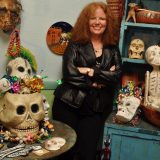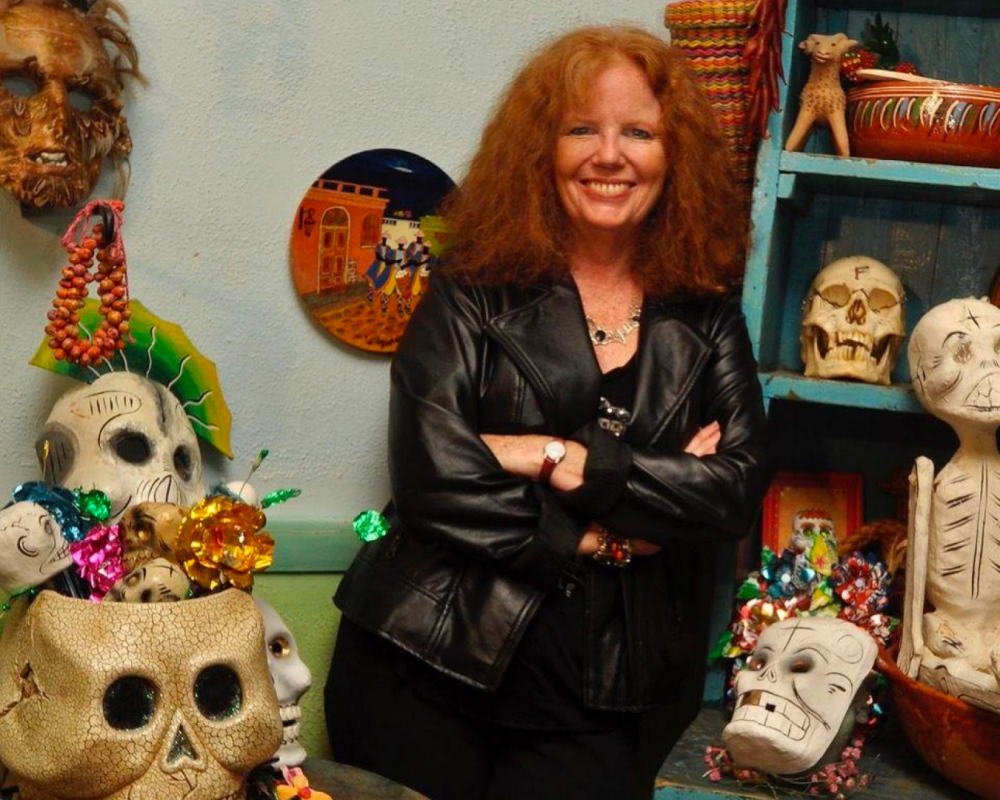On an episode of Milk Street Radio, author and historian Lesley Bannatyne gave Chris Kimball a Halloween history lesson, from parlor séances and silent suppers, to why throwing an apple peel over your shoulder just might bring you the love of your life.
Read excerpts from the interview below, and listen to the full episode here.
How did Halloween start?
All Saints Day was known in England as All Hallows. So, All Hallows Eve the night before All Hallows became All Hallows Eve, shortened to Halloween. And All Souls Day kind of gives it its connection with the other world and with the world of the Spirit.
The unlikely connection between Halloween, the Civil War, and ladies’ magazines
This was a time when they had suffered so much death in the Civil War, but also so much on knowing so many unidentified dead. So, the question was, where is my son? Is he dead? Is he in a hospital? Is he coming back? So, when you find Halloween stories in those ladies’ magazines, the first Halloween ghosts are actually Civil War soldiers coming home as ghosts.
But it wasn't just that they loved the spirit world, and spiritualism and séances. They were also the first postindustrial society, and it was a time when people were looking for things more rural, more simple, more related to nature, and perhaps a deeper truth. And so here was this holiday [Halloween] that they were finding out about, that seems so exotic, and yet so quaint and so old world and so natural, so attached to the earth, that they loved it also for that.
And then the explosion in cheap printing and magazines made it possible for everybody to read about this holiday. And what they printed more often than not, was a poem by Robert Burns called Halloween from 1785, which has this amazing amount of footnotes after the poem that detailed exactly how you play all the games that the Scots played on Halloween. And that's what the Victorian hostesses loved to pick up on is, “let's do this stuff. Let's do it. Here's the blueprint, we can do it at our party.”
The Halloween “dumb supper”
A dumb supper is something you find a lot in folklore, but it's a silent supper. You cook it in silence. In some cases, you're supposed to cook it backwards. I'm not quite sure how that works.
But you cook it in silence, you set an extra plate on Halloween, and you eat, and at midnight on Halloween, you are supposed to see the spirit of the person that you are missing, whether that be someone who has died, who you want to see again, or someone that you love that you think loves you, and you want to see if they really do either way. The spirit of somebody comes in and sits down at the table and starts eating with you.
What a Halloween celebration looked like in the late 1800s
You would expect the house to be a little bit darkened and lit by fire light and candles and jack-o-lanterns. And it would be spooky.
Victorian hostesses would cut strips of newspaper and hang them from the ceiling so you could just feel them go across your face. Or I've read really bizarre things like nailing a piece of liver to the wall so you feel that in the dark.
But it was all about creating an atmosphere...You would enter the house and if you had a cellar, the guests would be directed down [to the] cellar, maybe to a dark place to take off their coats but on the way down the stairs...there's one instance of breaking a giant paper bag over the person's head as they go down in the dark, and then someone else puts a wet hand on the back of their neck. So, there were some titillation, thrill. You wanted that sort of thing in a party.
But it was also beautiful—hanging horseshoes, and apples across the doorways and decorating with chrysanthemums, and having food that was available [like] nuts, apples, cabbages. And then you would play games. These are things that hostesses picked up from magazines by reading these Robert Burns poems.
Who will you marry? Throw an apple peel over your shoulder on Halloween to find out
In the old world, there was fortune telling on Halloween. At first, it had to do with who might die in the next year. But as time went on, and years went by, it was about who would you marry? Who would you love? Who loves you?
So, if you take an apple and pare it in one long peel, and you throw it over your left shoulder, it will land in the initial of the man or woman that you're going to marry. Or if you go out on Halloween, at midnight to a crossroads, you can hear the future whispered in the wind. Or, if you wet your blouse in a running stream (but any water will do). and hang it up to dry and go to sleep, your future love will come and turn it over in the middle of the night.
Want to host a Victorian-style Halloween party? Here’s how it’s done
You would set your table with candles and jack-o-lanterns and lots and lots and lots of colorful food. And you would have stations throughout your house, it would be throughout your whole house, you have candy upstairs, you have popcorn in the basement.
There was a Victorian party I read about where you let your water run over a cowbell. So, a bell tolls in the basement the whole time. Sound and food and light. And string leaves wherever you can string them. Hang apples from the doorways—it also becomes a nice game because trying to bite an apple on the end of a string was something that was very popular at a Victorian party, especially if you had a man and a woman on opposite sides trying to fight the same apple.
Quotes have been edited for clarity.
Join the conversation on Facebook, Instagram, TikTok and Pinterest.
And if you're looking for more Milk Street, check out our livestream cooking classes with our favorite chefs, home cooks and friends for global recipes, cooking methods and more.



